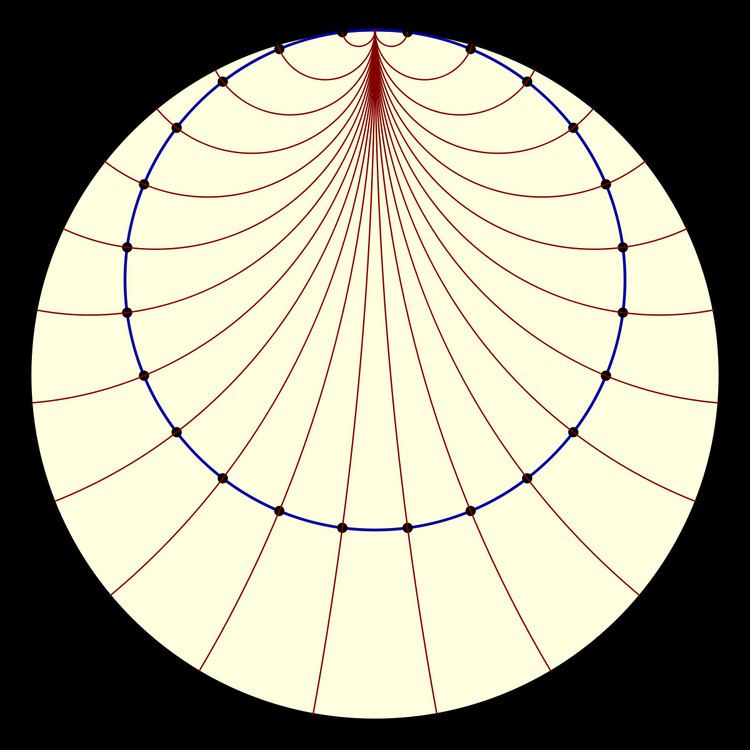 | ||
In hyperbolic geometry, a horocycle (Greek: ὅριον + κύκλος — border + circle, sometimes called an oricycle , oricircle, or limit circle ) is a curve whose normal or perpendicular geodesics all converge asymptotically in the same direction . It is the two-dimensional example of a horosphere (or orisphere).
Contents
- Properties
- Standardized Gaussian curvature
- Poincar disk model
- Poincar half plane model
- Hyperboloid model
- Metric
- References
The centre of a horocycle is the ideal point where all normal geodesics asymptotically converge. Two horocycles who have the same centre are concentric. While it looks that two concentric horocycles cannot have the same length or curvature, in fact any two horocycles are congruent.
A horocycle can also be described as the limit of the circles that share a tangent in a given point, as their radii go towards infinity. In Euclidean geometry, such a "circle of infinite radius" would be a straight line, but in hyperbolic geometry it is a horocycle (a curve) .
From the convex side the horocycle is approximated by hypercycles whose distances from their axis go towards infinity.
Properties
((ps still in draft))
Standardized Gaussian curvature
When the hyperbolic plane has the standardized Gaussian curvature K of −1:
Poincaré disk model
In the Poincaré disk model of the hyperbolic plane, horocycles are represented by circles tangent to the boundary circle, the centre of the horocycle is the ideal point where the horocycle touches the boundary circle.
The compass and straightedge construction of the two horocycles through two points is the same construction of the CPP construction for the Special cases of Apollonius' problem where both points are inside the circle.
Poincaré half-plane model
In the Poincaré half-plane model, horocycles are represented by circles tangent to the boundary line, in which case their centre is the ideal point where the circle touches the boundary line.
When the centre of the horocycle is the ideal point at
The compass and straightedge construction in the first case is the same construction as the LPP construction for the Special cases of Apollonius' problem.
Hyperboloid model
In the hyperboloid model they are represented by intersections of the hyperboloid with planes whose normal lies in the asymptotic cone.
Metric
If the metric is normalized to have Gaussian curvature −1, then the horocycle is a curve of geodesic curvature 1 at every point.
